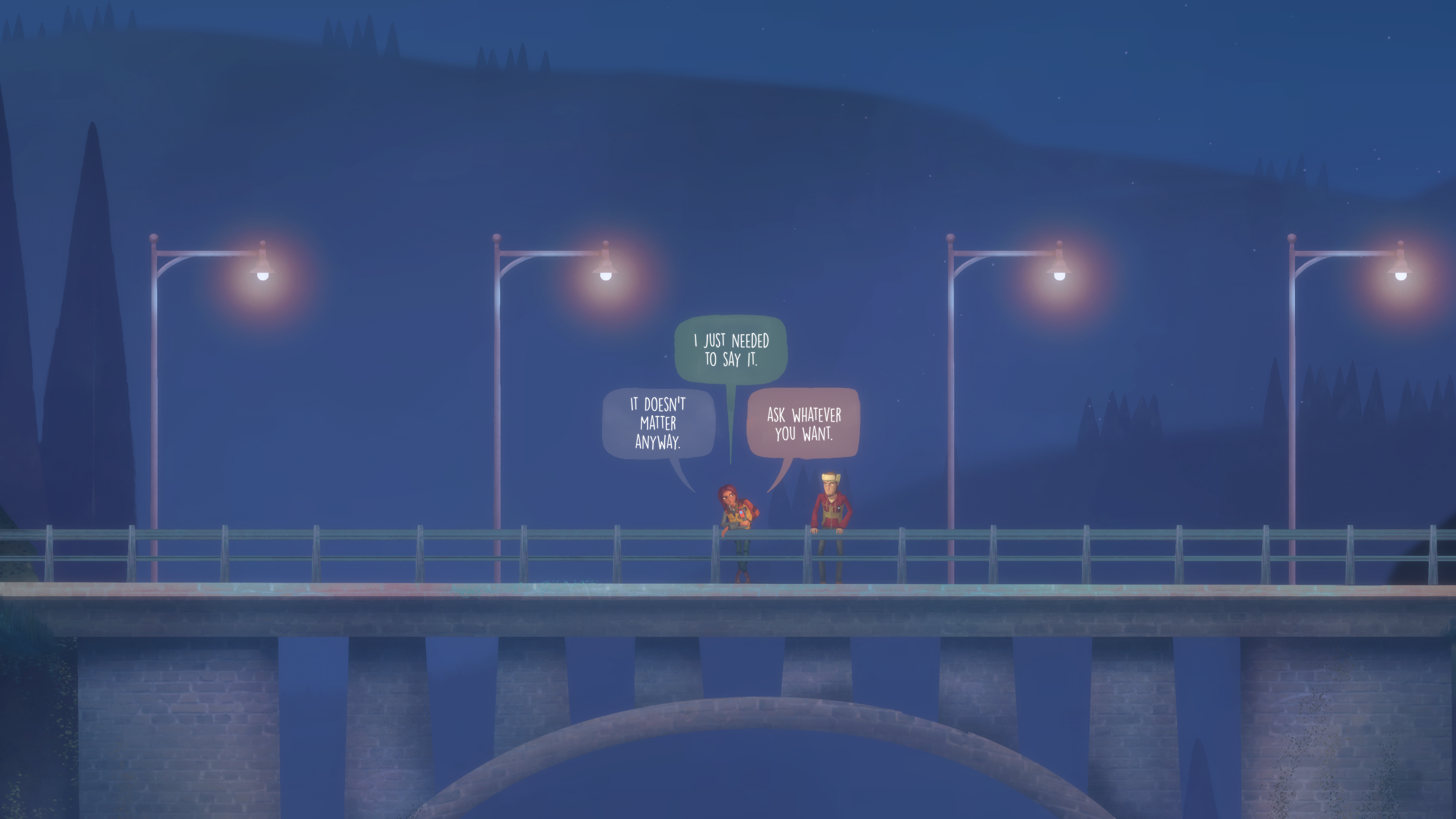Oxenfree II: Lost Signals delivers exactly what I wanted from a sequel seven years after the first game’s release. Although its broad A-to-C narrative feels like it lacks the “B” in Journey, I’m impressed by most of Oxenfree II’s accomplishments. It brings back the simple but engaging radio mechanics of the original, adds a walkie-talkie that expands the world around protagonist Riley, and, most importantly, introduces incredibly well-written and believable characters. does. While the paranormal events of Oxenfree II are scary and cold, the cast is warm, bright and complex, and the whole package feels like an ’80s summer romance.
If Oxenfree, developed by Netflix-owned Night School Studios, is about teenagers in the 1980s archetype that Hollywood popularized with its Netflix series. stranger things, then Oxenfree II is about less-seen adults dealing with their own mess afterwards. Five years after the original game, Riley arrives in her hometown of Camena for the first day of a new environmental research assignment. She grew up here and moved for reasons you’ll discover in the story, but finds herself returning at age 30 for work.
She soon meets Evelyn, a work co-worker 20 miles away, who shows her the ropes, and Jacob, who is now her co-worker. After placing a transmitter aloft on the island, things quickly go awry, and a familiar triangular prism appears over the sky at Oxenfree’s Edwards Island, with Camena visible in the distance. And it’s no good, so Riley and Jacob set out to put an end to it. As the two explore more of Camena, trekking through abandoned mines and caves, climbing ledges of cliffs, and speedrunning across moonlit beaches, they are drawn into a cult of irascible teenagers, stubborn in their decisions. Discover ghostly apparitions, some familiar faces and more. I thoroughly enjoy every trip to the following transmitter location as it always leads to more dialogue between Riley, Jacob and the various people in Camena whom Riley can talk to using the walkie-talkie.
Mechanically, the OxenFree II plays much the same way as its predecessor. You explore an island; Choose dialogue options that portray the protagonist as sarcastic, kind, or cold; and solve simple puzzles using the radio. Walkie-talkie is technically a new mechanic, but it’s mostly just another method of conversation. I don’t mind the sequel’s lack of mechanic innovation, but if Oxenfree’s heavy focus on narrative and light gameplay turned you off, this game might do the same. Just be careful when quitting the game, as the horrible checkpointing without an explicit save function caused me to replay several sections, which took my enthusiasm from playing them the first time.
I cannot express how much I enjoy the interactions between each character. Not only are they well-written, filled with romantic language designed to hook you into your feelings, but the voice cast delivers sincerity in every line. Riley and Jacob are clearly the standouts, and learning at the end that it’s possible to unfriend Jacob in the game was shocking. Jacob feels intrinsically connected to the story as light guides Riley through the mysterious journey of the night and his mind attempts to discover who he is at his core. In many ways, Oxenfree II is a story of discovery: of the extraordinary, spooky plans conceived by desperate teenagers, and of who these characters end up becoming after the night’s events.

I especially like the more mature tone and story of Oxenfree II because it reverses the trend of adults who think they know what’s best for teenagers. Instead, it lets players decide how Riley and Jacob treat them, and that freedom leads to some surprising twists. These excellent conversations and twists are the highlights of the narrative experience for me, but the overarching story somewhat fails, not because I don’t enjoy what it has to say, but because it feels rushed, almost like As if the second part is missing. Oxenfree II seems systematically slow and then, all at once, desperate to finish, and that’s bothersome.
Oxenfree II doesn’t quite shake off the performance its predecessor did in 2016, but it delivers the excellent writing and charm I’ve come to expect from Night School studios. Although it highlights gameplay beyond traversal, it is done so in service of the characters. After spending 10 hours with this cast, I want more, but I’m happy with where this story ends and how my choices shaped that ending. Despite rushing to the end after poor checkpointing and an overly long setup, this return feels earned and necessary, with a message that resonates far more than Oxenfree’s. With Oxenfree II behind me, I’m thrilled that Night School Studios has brought something so special out of this world more than seven years ago.
